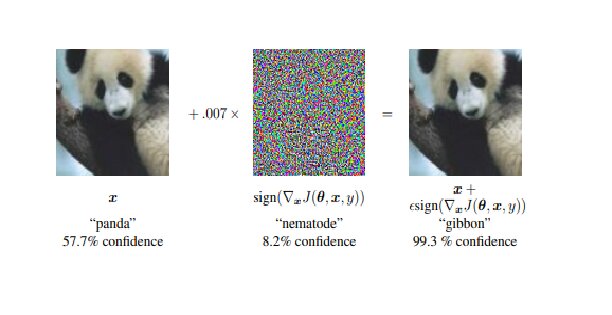Emerging Trends and Technologies in Data Science for 2023
The world has seen 3 major industrial revolutions so far, but did you know that you are part of the 4th one? Industrial Revolution 4.0 has already begun and the oil for this revolution is none other than “Data”. With huge chunks of data being ingested into the system, it becomes crucial to perform studies not just encompassing established statistical procedures but also the emerging trends in the field of data science to put all this data to its perfect use.
In this ever-evolving field of data science, let’s look at some of the latest upcoming trends in this area:
Deepfakes, Generative AI & Synthetic Data
Deepfakes are a combination of the phrases “deep learning” and “fake”, and it uses artificial intelligence to manipulate or create content to represent someone else. Deepfakes had their first major impact on the Internet in late 2017 and it’s spreading like forest fire since then. It is powered by an innovative new deep learning method known as generative adversarial networks (GANs) and the technology behind this is termed Generative AI. Generative AI aims to generate or create something that doesn’t exist, and it has already set its foot in art, entertainment, and political domains. As there is huge scope for this technology to be used maliciously hence preventive measures like software to defend against deepfakes include Truepic and Deeptrace have already started to come up. Additionally, regulatory laws are also being pipelined and discussed by decision-makers at various levels. But the battle with deepfakes has only just begun!!
The only positive impact of this technology is its huge potential to generate “Synthetic Data” for the training of other machine learning algorithms. A few interesting examples of this could be synthetic faces of people who have never existed to train facial recognition algorithms while avoiding any privacy concerns involved with using real people’s faces, training image recognition systems to spot signs of rarest form, and infrequent photographed cancers in medical images.
Best-suited Data Science courses for you
Learn Data Science with these high-rated online courses
Python will still rule as the top Programming Language for Data Science
Python continues to be a de facto winner for coding all the complex machine and deep learning algorithms. The reason for Python being the leader is not surprising as the sheer amount of flexibility, the availability of an enormous set of libraries and the online support system which this language possesses is unbeatable. Python is not just a tool but an entire environment by virtue of integrations it supports with other programming languages and external libraries hence making it an entry point for getting into Data Science and AI world.
Explore: https://www.shiksha.com/online-courses/python-for-data-science-and-ai-course-courl1678
The Augmented Workforce
The fears about machines or robots replacing human workers and making some roles redundant have always prevailed. However, as companies are streamlining the data ingestion process and building an AI-literate culture within their teams, we will increasingly find ourselves working with or alongside machines that use smart and cognitive functionality to boost our own abilities and skills. But this at any point does not make the human’s ability to analyze the situation and take decisions accordingly any lesser and there is still a long way to go before we can say that machines can over-shadow the cognitive abilities of humans.
Also Read – Top Industries Hiring Data Scientists in 2022
AI-As-a-Service (AIaaS) Platforms and Increased Demand for End-To-End AI Solutions
AIaaS is the third-party offering of artificial intelligence (AI) outsourcing. The biggest draw of such platforms is the opportunity to take advantage of data insights without needing the massive up-front investment in talent and resources. According to Gartner,
The top 4 biggest players in offering AIaaS are:
Amazon: Amazon Web Services (AWS) covers 3 crucial areas in this domain namely Machine Learning, Computer Vision, and Language processing. Dedicated tools and features are available for working with ML models, analyzing natural language, and solving computer vision tasks. Sometimes the requirement is to speed up the process of building and training an ML model, in such scenarios AWS offers over 200 pre-trained models and ML algorithms on the AWS Marketplace.
Google: With a primary focus on machine learning, Google AI Platform is a code-based data science development environment. This Platform allows teams to collaborate on ML projects from the dashboard pre-designed on their cloud console. Google platforms take care of five out the 7 stages of an ML project and the developer is only required to take care of data pre-processing (which indeed is very typical and very hard to generalize as a service) and the coding of the model (which again is the easiest task in an ML project lifecycle). All other stages like training, evaluating, and tuning models, deploying trained models, getting predictions from models, monitoring ongoing predictions, and managing ML models and versions are taken care of by the platform.
IBM Watson: IBM Watson took things a little notch up by providing both generic and industry-specific AI Services. IBM Watson has a wide range of tools for preparing data, building, and training ML models. There is no shortage of deployment options as well. For example, Watson Studio has provision for deploying on a public or private cloud as well as on a desktop. On the other hand, Watson Machine Learning integrates well with Watson Studio and can be deployed in a public cloud, private cloud, or multi-tenant distributed environment. In addition to this, it also provides ready-to-use API’s that allows the end-user to integrate AI functionalities into its existing applications. But the most fascinating feature of this platform is its set of empathy tools for understanding human emotions in text. A few examples of empathy tools include Personality Insights (this tool predicts personality characteristics and needs of the specific person based on the written text) and Tone Analyzer (Understands human emotions in text).
Microsoft Azure AI Platform: Like AWS, IBM Watson, Azure AI Platform can also be used for solving tasks related to ML, computer vision, and language processing. Azure has 3 major divisions of its AI Services namely Machine Learning (It’s a Python-based service that provides capabilities for building, training, and deploying various ML models), Knowledge Mining (It helps in extracting insights from our content and turning it into usable data).
To know more about the job profile and responsibilities of a Data Scientist, refer to our blog – What is Data Scientist?
Adversarial Machine Learning
Adversarial Machine learning can be thought of as an “Optical Illusion designed for a machine”. As machine learning models matured and improved, the ways of attacking these models increased as well. Such attacks on the machine learning model are termed “Adversarial Attacks”. Before understanding how these attacks are tackled, let’s figure out the type of such attacks. There are predominantly 3 types of attacks.
Poisoning: It manipulates the data before it is used for training. In this, the attacker will change existing data or introduce incorrectly labeled data. Thus, the model trained on this data will then make incorrect predictions on correctly labeled data. This kind of attack is more prevalent in reinforcement learning models where model training happens multiple times on a weekly/daily basis or in a few cases its real-time and training is done each time new data is introduced as such learning provides more chances for attackers to corrupt the model training data.
Model Stealing: It manipulates the model to learn about the model or data. This type of attack focuses on learning the structure of the model or the data used to train the model. This kind of attack is prevalent where the model is trained on confidential data like customer personal information like addresses and phone details as getting access to such data can be used for personal attacks. In some cases, these attacks are used for understanding the structure of data used for model training. For example, a model trained on predicting inflation rates for consumer goods in one metro city can be copied for predicting the price in another metro city as behavior would be the same. Such attacks could also act as predecessors for future attacks as the model structure has now been decoded.
Evasion Attacks: It manipulates the model to make incorrect predictions. It is brought into action by making the model use data that the attacker has manipulated than the data on which the model is trained to make the prediction. Image recognition is more susceptible to such attacks as the attackers create images that are perfectly normal to human eyes but result in completely incorrect predictions.
The below study from google shows how a basic noise element introduced in input data which was not at all visible to the human eye caused the panda in the given picture to be predicted as a gibbon.
Figure 1: Adversarial example (Source: https://arxiv.org/pdf/1412.6572.pdf)
You May Like – Steps to Create Your Own Machine Learning Models
Now that we have understood the kind of attacks that are happening to disrupt the model performance, let’s try to understand the ways to combat the same.
Let’s list down 3 such ways:
Adversarial training: In this approach, the model is trained in a manner taking into consideration such cases of adversarial attacks. For instance, any previous known attacks can be used as input to train the model for the future. There are also packages like the Adversarial Robustness Toolboxwhich are developed by IBM and aim to simplify the process of adversarial training.
Multiple/Ensemble Models: In such a model we have not one but multiple models impacting the final prediction. With this not only do we have better performing models, but it makes things difficult for the attacker as now the target is moving as model execution would switch between multiple models.
General Security Measures: As these models don’t exist stand alone but are part of an entire ecosystem of Databases, cloud storage, scripts, and on-premises storage hence adopting stringent defense mechanisms to sage guard the entire ecosystem would prevent the attackers to enter the zone altogether.
Accelerating IoT Adoption
According to the report – IoT Use Case Adoption Report 2021, around 79% of organizations are planning to invest huge amounts of money into IoT projects in the coming two years. Especially in the Supply chain management/optimization use case, IoT analytics is being seen as a game-changer. Among companies that have rolled out IoT tools for asset/plant performance optimization,97% have already indicated a positive ROI.
Check Out Our Data Science Courses
Ever-Evolving Data Science Community on Kaggle
There are no two thoughts about Kaggle being the supreme leader in building such a vast network of data scientists in a very short time. It has over 5 million users across 194 countries, it’s not showing any signs of slowing down. It has provisions of diverse datasets, interactive workbench to implement the algorithms without having the pain of setting up the environment and not the miss the support community which has answers to majorly all our queries.
Some final thoughts on these continuously growing fields of Data Science. As we know Data Science is evolving at an unimaginable pace hence keeping track of these trends can be one way to keep ourselves updated and relevant in this competitive market and always have our A-game ready.
About the Author:
Nishkam Shivam is a seasoned data scientist having worked for the Fortune number one company and other Fortune top 100 clients. His expertise is in solving complex business problems. His area of interest in research work includes – sports and crime analytics and he has been teaching and mentoring budding data scientists all over the country on various e-learning platforms.
————————————————————————————————————–————————-
If you have recently completed a professional course/certification, click here to submit a review.
This is a collection of insightful articles from domain experts in the fields of Cloud Computing, DevOps, AWS, Data Science, Machine Learning, AI, and Natural Language Processing. The range of topics caters to upski... Read Full Bio





